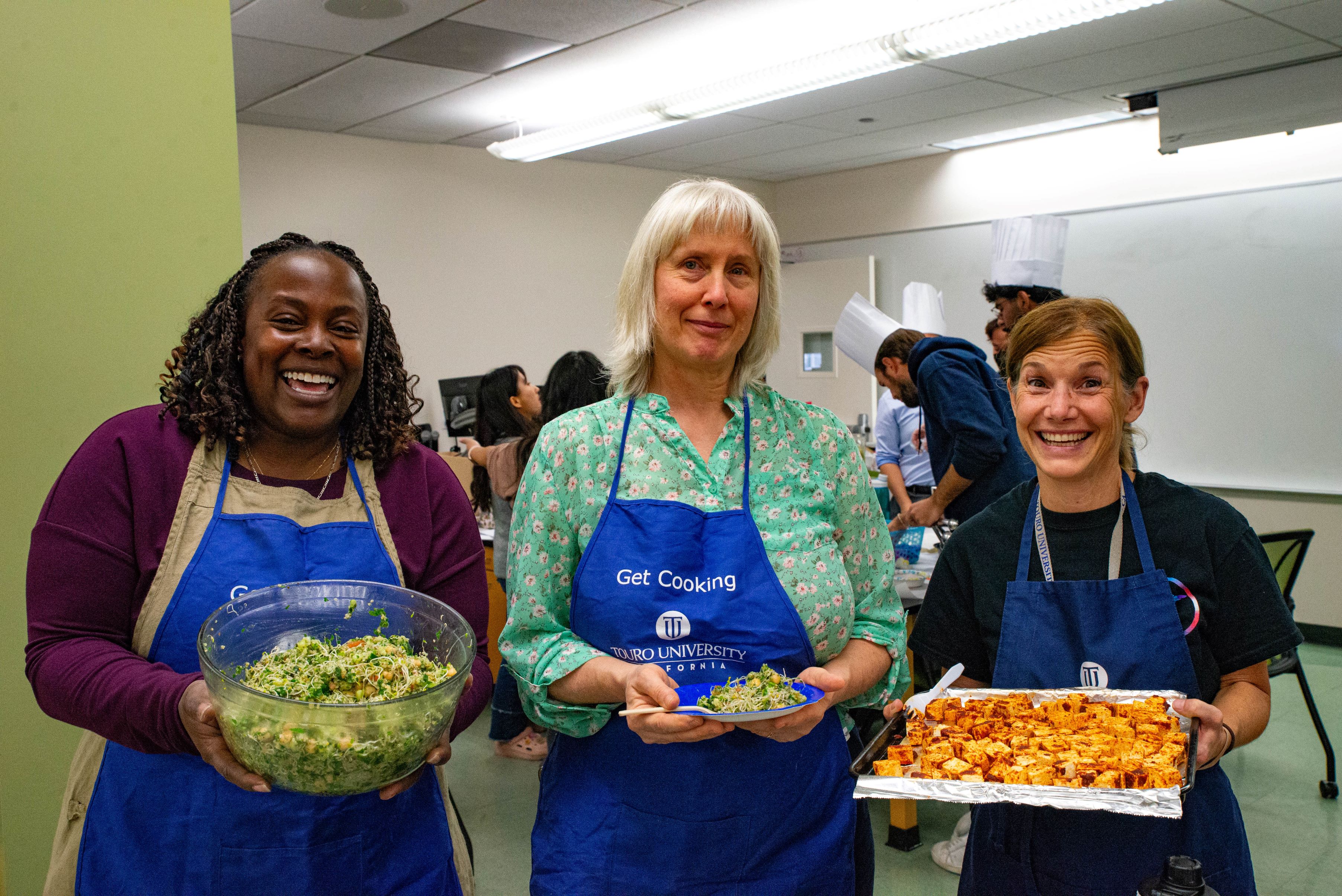Nutrition Education for Better Health
From classrooms to communities, Touro’s nutrition program bridges information with real-world food choices.

Most medical school educations include the biochemistry of nutrients and what their deficiencies might look like, but rarely how that translates into the foods people eat, according to a recent TIME article. If a patient with a chronic condition needed to address issues with their diets and eating habits, few physicians have the training to provide specific guidelines or recommendations for what to eat.
“If I’m supposed to be on a low sodium diet, what does that look like?” asks Grace Marie Jones, PhD Associate Professor Department of Foundational Biomedical Sciences College of Osteopathic Medicine (COM) at Touro University California (TUC). “You want these student doctors, who will be physicians with real patients, to intelligently answer this question.”
To address the gap, Jones and Dr. Traci Stevenson, COM Assistant Professor and certified culinary medicine specialist, lead courses that combine abstract nutritional knowledge with real food and cooking classes. By connecting nutritional chemistry with hands-on cooking, it creates a tangible example for students to understand how the food you consume affects your body. With that knowledge, it becomes another tool for diagnosis and treatment.
“Now students have the connection between what they’re eating and what’s happening physiologically,” says Jones. “Understanding that foods are, in the end, small molecules that your body processes accordingly, irrespective of the clever marketing and the packaging. It’s getting students to think about the big picture and not just the biochemistry that they have memorized.”
What started out as an online medicine and nutrition assignment in 2016, evolved into five summative events that are required for all COM students during pre-clinical education. The topics range from vitamins and cancer nutrition to cardiovascular disease and sports medicine, then connect them to the whole-person care that is a part of osteopathic medicine. The approach emphasizes a patient-centered model of health care that looks beyond symptoms to understand lifestyle factors that may also be contributing to the problem.
Stevenson notes that a movement for making nutritional education in medical school mandatory is gaining momentum. Jones recently represented TUC at a federal food as medicine summit where medical experts discussed ways to implement this into education. In this way, Stevenson notes, TUC is ahead of the changes that are coming.
“Our nutrition program meets all the things students are asking for,” says Stevenson, who sees future opportunities for students to work with organizations that feed those in need. “Our students always want more hands-on things, and I think this serves a win-win where students can get real clinical experience with food as medicine and be in our Vallejo community helping people who are in the most need.”
One avenue that connects students and the community is Project HAPPY (Healthy Attitudes Produce Positive Youth), a community-based family-centered program that teaches families about healthy living through interactive classes, cooking demonstrations, physical activity sessions, and personal health-navigators.
Jones and Stevenson are now working to expand nutritional knowledge to other professions, recognizing that Nursing, Physician’s Assistant (PA), Pharmacy, and Education students could greatly benefit from the training. For now, a yearly interprofessional elective called Functional Nutrition and Lifestyle Medicine is offered, but they hope to do more.
“We have it in COM, but what does that look like for pharmacists?” says Jones. “What does that look like for PA students? What does that look like for the folks in education who are teaching K through 12? We know that nutrition is a huge issue for the children that these folks teach.”
